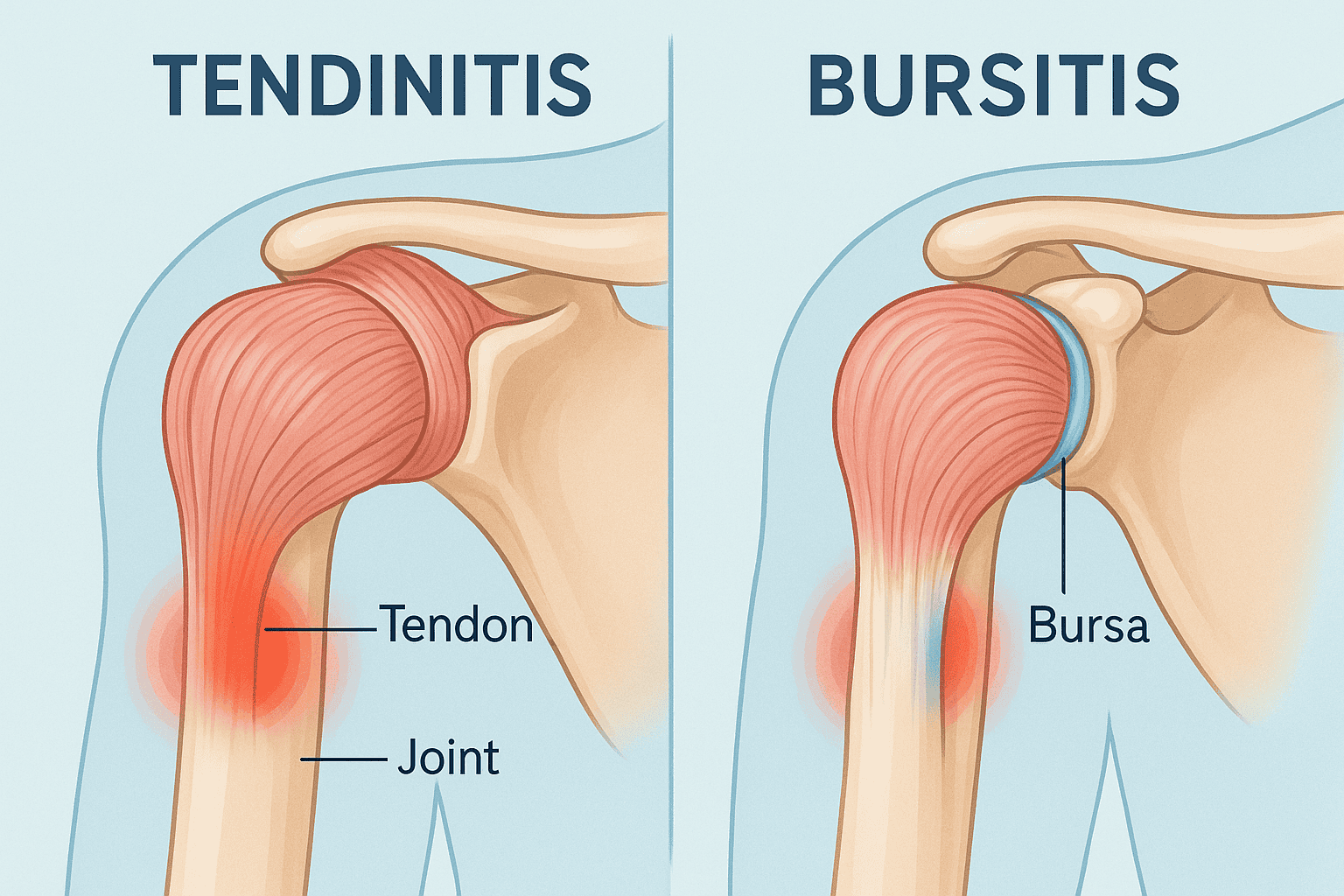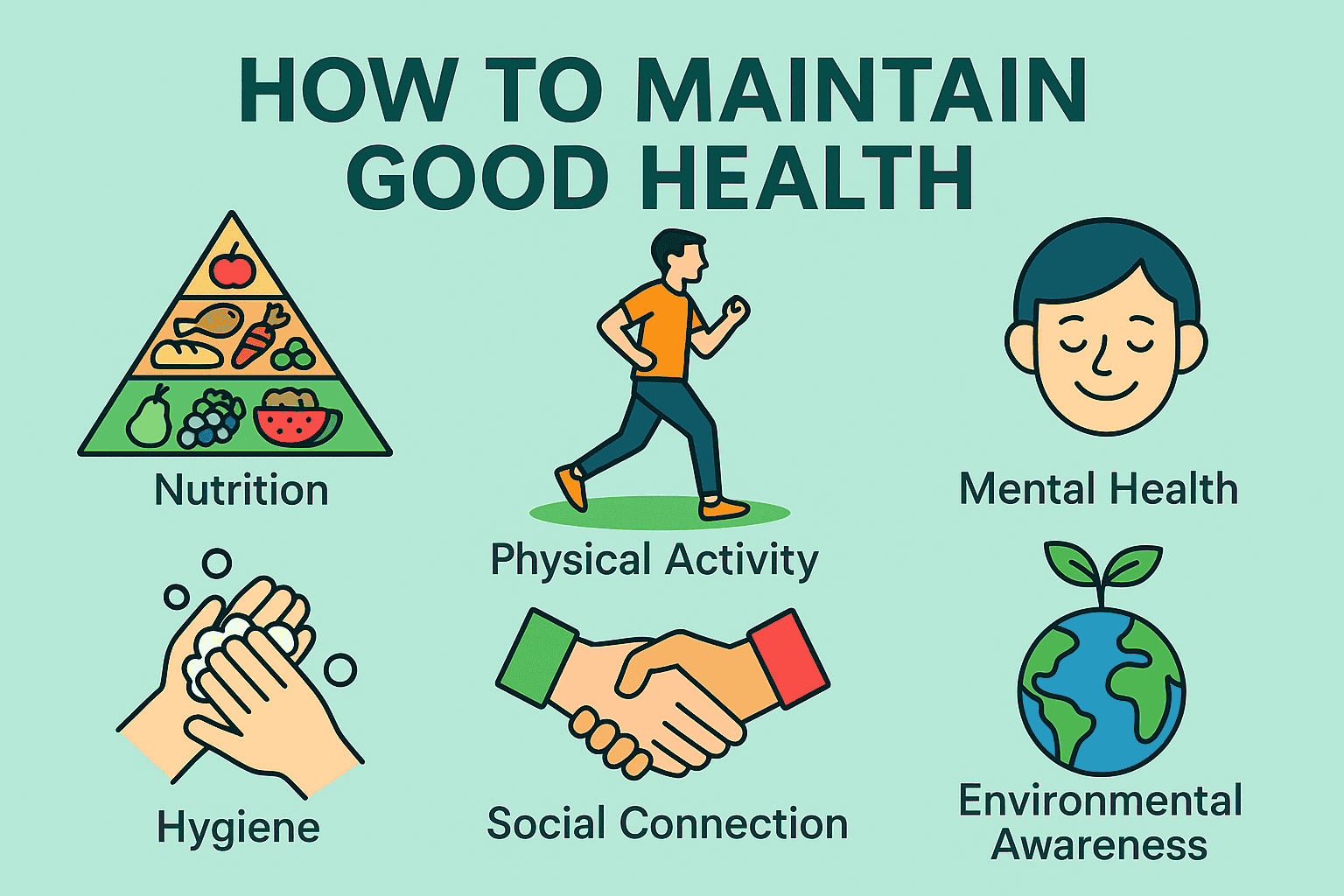Joint pain is something I’ve personally dealt with during my early days of physical training. At first, I had no idea whether it was bursitis or tendinitis—both can feel very similar. But understanding the differences helped me manage the pain better and avoid making things worse. In this post, I’ll break down what I’ve learned through experience, research, and physiotherapist consultations.
🔍 Understanding the Basics
Both bursitis and tendinitis are types of soft tissue inflammation that commonly affect joints such as the shoulder, elbow, knee, ankle, or wrist. These two conditions often get confused because their symptoms are quite similar—but they actually involve different structures in the joint.
- Tendinitis refers to inflammation of a tendon, the fibrous tissue that connects muscle to bone.
- Bursitis is inflammation of the bursa, a small fluid-filled sac that acts as a cushion to reduce friction between bones and surrounding soft tissue.
Although they can occur separately, I’ve also experienced them at the same time—especially after repetitive movements during workouts.
⚠️ What Causes Them?
In my case, both conditions were triggered by overuse during repetitive exercise routines. But the causes go beyond just physical activity. Here’s a more complete breakdown based on what I’ve learned:

- Repetitive motions (sports, gym, typing, etc.)
- Sudden trauma or impact to a joint
- Poor posture or ergonomics
- Aging (tendons naturally lose flexibility over time)
- Underlying health issues like rheumatoid arthritis, gout, diabetes, or bacterial infections
- Sedentary lifestyle, which weakens joint-supporting muscles
Interestingly, in the case of bursitis, even a previous joint injury can cause the bursa to inflame later on.
🔎 Key Differences in Symptoms
Initially, I couldn’t tell what was going on—both caused pain, swelling, and stiffness. But I learned to spot a few differences:
| Feature | Bursitis | Tendinitis |
|---|---|---|
| Onset | Often sudden | Gradual, worsening with time |
| Pain location | Localized to one spot | Can radiate (e.g., shoulder to arm) |
| Skin symptoms | Warmth, redness may be present | Usually no skin changes |
| Range of motion | Limited due to swelling | Limited due to tendon stiffness |
For example, when I had shoulder bursitis, the area felt hot and red, while with tendinitis, the pain spread gradually from the shoulder into my upper arm.
🩹 What Helped Me Recover (Treatment Tips)
Here’s what worked best for me—and what my physio recommended:
🔹 Immediate Relief
- Rest the joint—don’t push through the pain.
- Ice therapy: 15–20 minutes, 3–4 times a day for the first few days.
- Compression wraps to reduce swelling.
- NSAIDs like ibuprofen to relieve pain and inflammation.
- In some cases, alternating ice with heat therapy helped relax the surrounding muscles (especially for tendinitis).
🔹 Ongoing Management
- Physiotherapy was essential. Targeted stretches and strengthening exercises helped me recover faster and prevent future flare-ups.
- Electrostimulation therapy really reduced my shoulder tendinitis pain during physio sessions.
- When pain didn’t improve with regular medication, my doctor gave a corticosteroid injection, which worked well for bursitis in my elbow.
- Surgery is rare—but in chronic cases, surgery may be necessary to remove the inflamed bursa or damaged tendon tissue. I haven’t needed this, thankfully.
📌 What I Learned From Experience
As someone who exercises regularly and sits long hours at a desk, I’ve come to realize the importance of prevention:
- Always warm up before intense workouts
- Take breaks when doing repetitive tasks (typing, lifting, etc.)
- Use ergonomic chairs and proper posture
- Don’t ignore early signs of pain—treat them before they become chronic
Both conditions can significantly limit mobility and quality of life if left untreated. But with the right care, recovery is possible without invasive procedures.
🧠 Final Thoughts
If you’re dealing with unexplained joint pain, don’t self-diagnose. I made that mistake once, and it delayed my recovery. Consult a physiotherapist or doctor to get proper evaluation and treatment.



